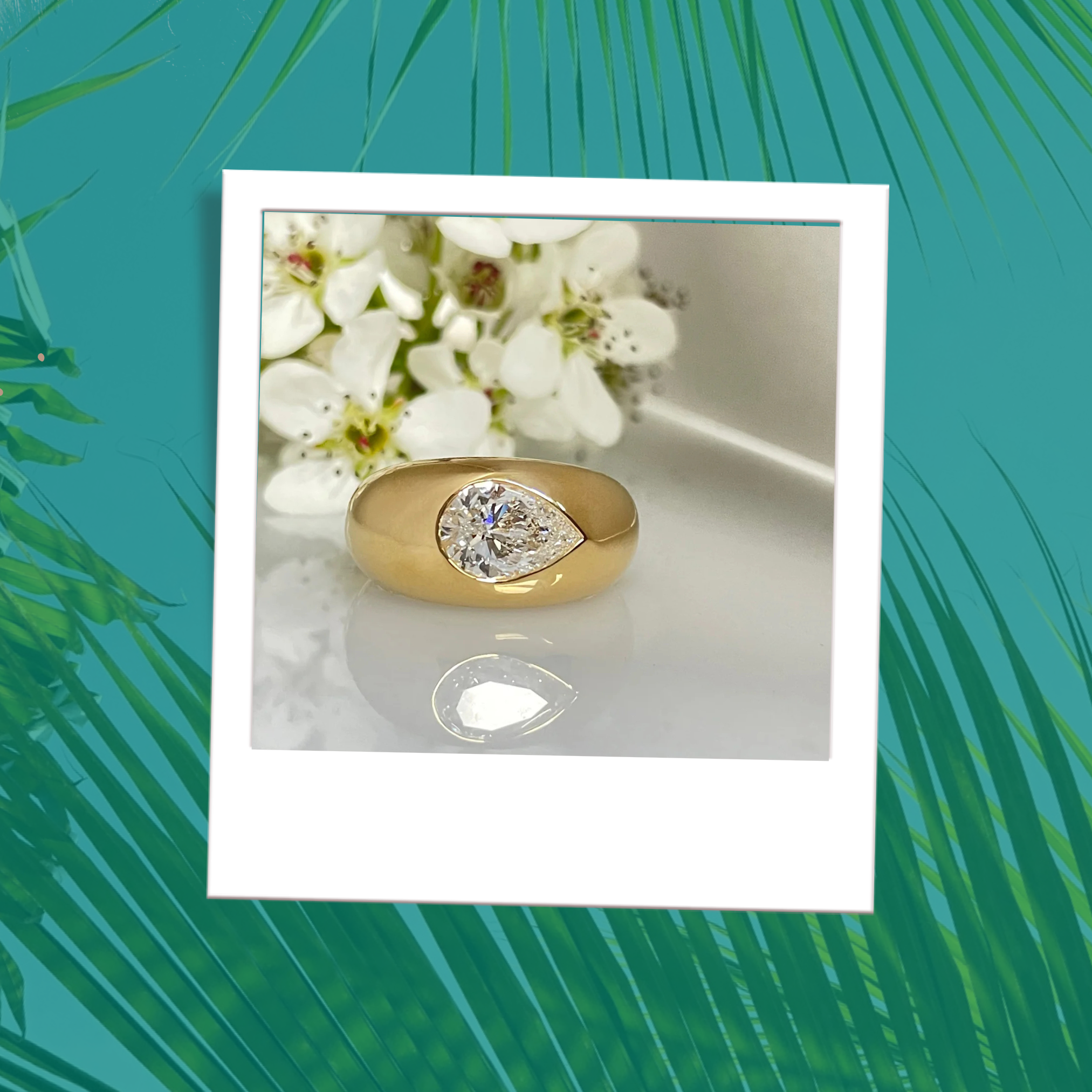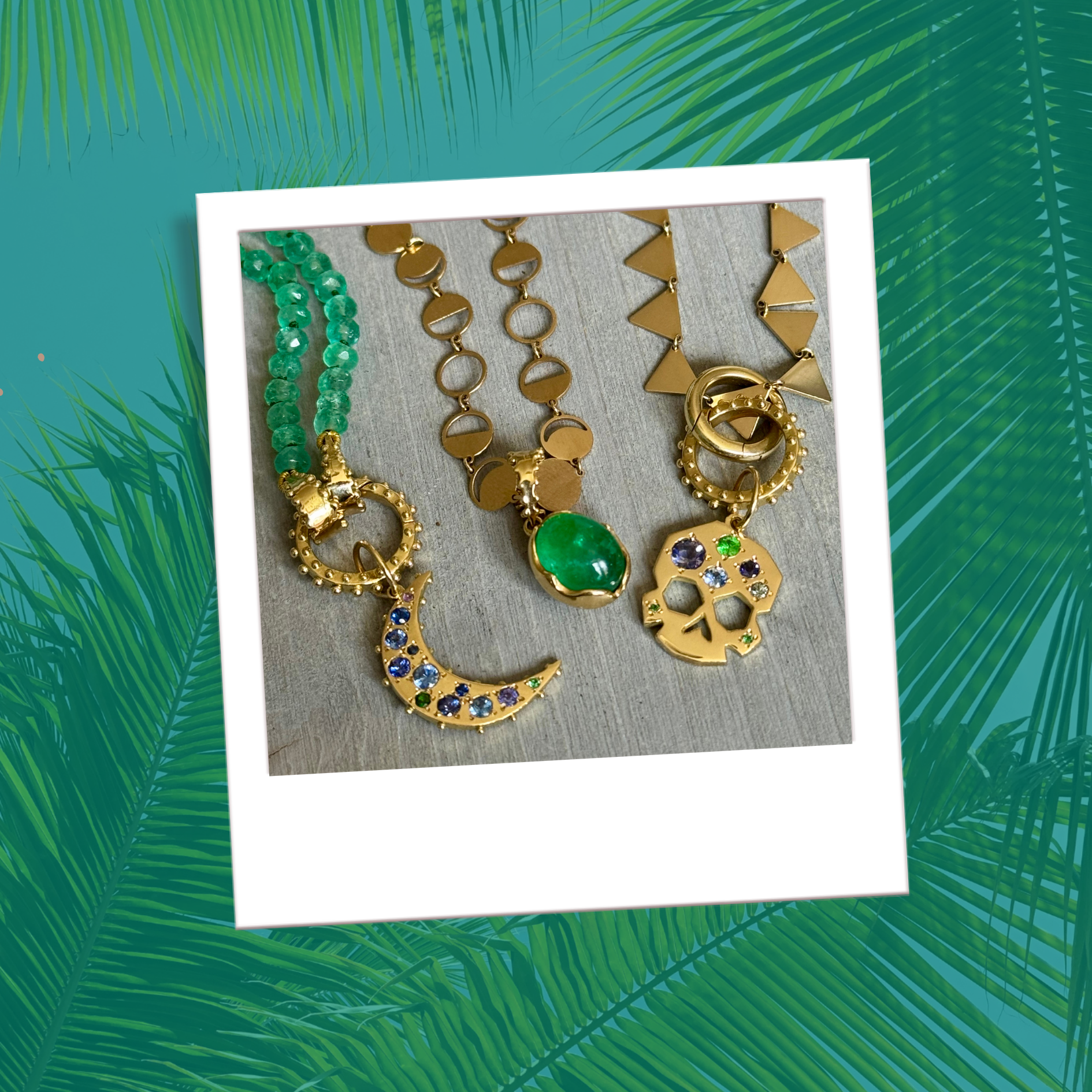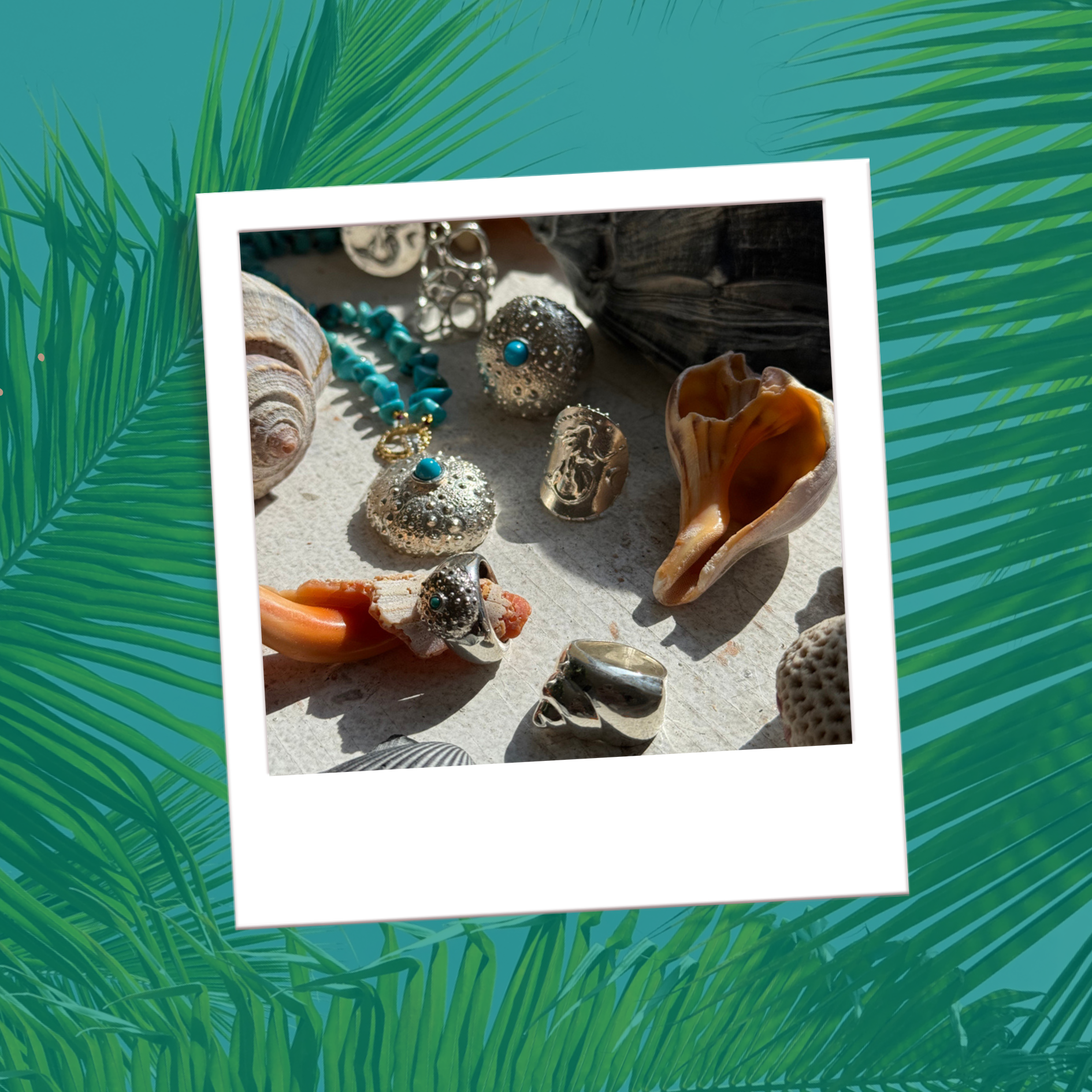
Lab-Grown Diamonds & Sustainability: A Designer’s Perspective
Lab-grown diamonds are often seen as the sustainable choice in fine jewelry—but is that reputation deserved? In this article, I examine the full story behind the sparkle, drawing on my experience as a designer and sustainability professional.
As a jewelry designer who believes in crafting with intention—from the symbolic meaning of each talisman to the materials I choose—I’ve long been committed to sustainable practices. So when lab-grown diamonds (LGDs) began to take center stage as the “ethical” alternative to mined stones, I paid close attention.
The narrative is compelling: diamonds created without digging into the Earth, free from conflict, and supposedly kinder to the planet. But a closer look reveals a complex picture—and one that lacks the transparency we should demand from any product claiming to be sustainable.
Misleading Language and Invisible Infrastructure
Let’s start with the term “lab-grown.” It evokes images of small, controlled scientific environments. But in reality, most lab-grown diamonds are produced in massive industrial factories, not labs. These facilities are capital- and energy-intensive, often built in areas where oversight is limited and local benefits unclear.
- Who builds these factories?
- What natural resources—energy, water, land—are they diverting?
- Do they benefit or burden surrounding communities?
These questions matter. Because sustainability isn’t just about the absence of mining—it’s about the presence of care, equity, and accountability throughout the supply chain.
An Opaque Supply Chain with No Offical Third-Party Oversight
A critical problem in the LGD industry is the lack of third-party certification at every step:
-
How is the diamond grown? There’s no standardized, independent system to verify energy usage, emissions, or safety practices within the factories.
-
Where is it cut and polished? Most LGDs are sent to the same cutting hubs as mined diamonds—like Surat, India—where working conditions vary and transparency is rare.
-
Who verifies labor standards or environmental impacts? Currently, no widely adopted third-party audit systems exist to certify LGDs on environmental, social, and governance (ESG) criteria.
One promising initiative attempting to bring third-party oversight to the diamond space is the SCS-007 Certified Sustainability Rated Diamonds standard, developed by SCS Global Services. This certification evaluates both natural and lab-grown diamonds across five key areas: origin traceability, ethical stewardship, sustainable production, carbon footprint reduction, and investment in social and environmental impact. While its criteria are rigorous and several lab-grown producers—like ALTR and Craft Lab Grown Diamonds—have earned certification, adoption remains limited and consumer awareness is still low. The effort reflects a step in the right direction, but broader industry participation and transparency around data disclosures will be essential if it's to build real trust.
Contrast this with initiatives like Fairmined Gold, where origin, labor conditions, and environmental practices are independently verified and traceable down to individual miners. We need a similar level of rigor for LGDs.
“A lab-grown diamond made with coal-fired electricity and vague traceability isn’t sustainable—it’s just unmined.”
Ethical vs. Sustainable: A Crucial Distinction
Much of the confusion stems from conflating ethical with sustainable. An ethical diamond typically refers to one that is not linked to conflict zones or exploitative labor, but that doesn’t automatically make it sustainable.
Sustainability takes a broader, more systemic view—encompassing environmental impact (like carbon footprint and resource use), social equity (such as community benefits and working conditions), and economic resilience over time. A lab-grown diamond made with coal-fired electricity, in a non-transparent supply chain, may avoid the most visible ethical issues—but it’s far from sustainable in the true sense of the word.
“Ethical means no harm. Sustainable means regenerative good. We need both.”
The Energy Question: Source Matters
Creating diamonds in a factory setting requires a staggering amount of electricity—anywhere from 250 to 750 kWh per carat, depending on the method used (HPHT or CVD) and region. In many cases, that electricity comes from coal-fired grids.
A 2022 Trucost study (commissioned by S&P Global) found that lab-grown diamonds can produce up to 511 kg of CO₂ per carat, more than twice that of some responsibly mined diamonds.
But there are better models:
- Diamond Foundry powers its facilities with hydroelectric energy.
- Aether Diamonds uses carbon capture technology and claims a carbon-negative process (though industry-wide verification is still needed).
End-of-Life: The Factory Footprint
While the diamond itself may last forever, the infrastructure behind it does not. The environmental footprint of these factories—both in construction and in decommissioning—is rarely accounted for in sustainability narratives. There is no discussion of:
- Waste streams from production
- Land use impacts
- What happens to the facilities after their operational lifespan ends
“True sustainability means considering not just the diamond—but the factory that made it, the energy that powered it, and the lives it touched along the way.”
False Binaries and Missed Opportunities
Lab-grown diamonds are often pitted against natural diamonds in a misleading binary: as if one is wholly good and the other inherently bad. But the reality is more nuanced.
Yes, irresponsible mining has caused environmental and social harm—but responsible sourcing efforts do exist and are gaining ground. Organizations like Moyo Gems (for colored gems), Fairmined (for gold and silver), and Reciprocity Jewels (which I co-founded) prove that traceability, community empowerment, and regenerative practices are possible in the mining sector.
More importantly, in many artisanal mining communities, mining is not just a job—it’s a lifeline. Replacing it with distant, fossil-fueled factories does little to solve the root problems. Instead, we should also be investing in uplifting mining communities, ensuring fair wages, safe practices, and environmental regeneration.
Framing the Full Picture
When I completed my business sustainability certification at NYU Stern, I studied the ROSI™ methodology—Return on Sustainability Investment. Unlike traditional ESG metrics, ROSI focuses on linking sustainability strategies to tangible business value. It helped me see that sustainability isn’t just about reducing harm—it’s about generating measurable benefits for people, planet, and long-term prosperity. That training continues to inform how I design, source, and advocate within the jewelry industry.
That lens is why I advocate for greater transparency and systems thinking in both lab-grown and mined diamond sourcing. Because when we apply rigorous, holistic frameworks, it becomes clear that vague claims and marketing buzzwords fall short of the meaningful change we need.
The Path Forward: What Real Sustainability Requires
Lab-grown diamonds have the potential to be a more sustainable choice—but only if they commit to the following:
- Third-Party Certification: Independent, verifiable standards for energy use, carbon footprint, labor rights, and environmental practices.
- Transparent Supply Chains: Clear documentation of every step from growth to cutting to setting.
- Community Engagement: Factories should contribute to local well-being, not extract resources without return.
- Life Cycle Assessments: Including not just the diamond’s creation, but the long-term environmental cost of the infrastructure itself.
- Consumer Education: Empowering buyers to ask the right questions and understand the full story behind the sparkle.
What to Ask Before Buying a Lab-Grown Diamond
- What energy source was used to grow this diamond?
- Is the production facility certified or third-party verified?
- Where was the diamond cut and polished, and under what labor conditions?
- Is the supply chain traceable from growth to final setting?
- What is the environmental impact of the factory that produced it?
We don’t need perfection—we need progress with integrity. Whether it’s a lab-grown or mined diamond, what matters is the care taken at each step.
Sustainability isn’t a label. It’s a responsibility. And the more we demand clarity and accountability, the more beautiful our industry—and the world—can become.
Resources & References
- Journal of Cleaner Production (2020): Environmental Life Cycle Assessment of Synthetic Diamond Production
- Trucost/S&P Global Report (2022): Carbon Footprint of Lab-Grown vs. Mined Diamonds
- Diamond Foundry: Sustainability Claims
- Aether Diamonds: Carbon Capture Process
- SCS Global Services – SCS-007 Certified Sustainability Rated Diamonds
Note: While Fairmined certification applies only to gold and silver, not diamonds, its model illustrates the kind of rigorous, third-party accountability currently lacking in the lab-grown diamond industry. For diamonds, full supply chain traceability remains limited and largely unverified.



